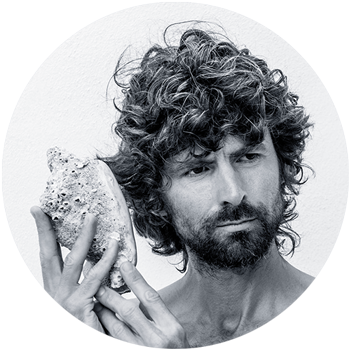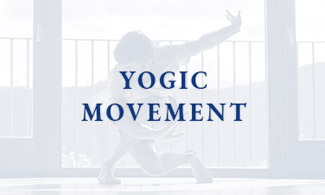
Yama-niyama: Beyond Rules to Robust Harmonisation
One way that yoga could be described is as coming into sustainable, integrated balance, through all parts of ourselves and in relation to the world around us. A striking feature of ‘conventional, modern yogāsana’ is that it puts those who practice it into lots of different positions and orientations: bending forwards, to the side, reaching up, down and around, and even bending over backwards and turning our world upside down, if only for a few moments! One of the reasons for this is that it can help train us, at a neuromuscular, physiological level, to stay centred and integrated come what may. As we foster sustained steadiness and ease through all these different orientations, it can train us to maintain steady ease and balance as a platform for the optimal and most skilful response in whatever position or situation we find ourselves in life.
However, this is just one part of yoga practice, which, as Patañjali defines it, is really everything we do, all the time. In his Yoga Sūtra-s Patañjali defines practice (abhyāsa) as the long-time, sustained, uninterrupted, wholehearted effort to foster steadiness, attended to with commitment and a spirit of devotion (YS 1.13-14 my rendering). Everything we do then, can be considered ‘training’. Everything we do in life, all our ‘exercise’: external work, including, but certainly not limited to the time we work with yoga techniques; can be yoga practice. If we are interested in experiencing yoga and bringing its harmonising power more fully into our lives, this then raises the question of how we can make most skilful use of our constant practice and training. How can we ensure that we are fostering helpful patterns, rather than hindering ones? If we work with yoga ‘exercises’, we might wonder how we can ensure that they actually cultivate yoga in the sense of true balance and integration.
At a certain stage in life, we realise that there are no real hard and fast ‘rules’. Even things which would generally seem unconscionable are in certain situations the most appropriate course of action. And sooner or later, we find ourselves in situations where the ‘rules’ or structures we have lived by are no longer broad or inclusive enough to guide us through the challenging situation we are now facing. The yogic masters understood this, and so they avoid ‘rules’. One of the many beautiful, striking features of Patañjali’s Yoga Sūtra is the complete lack of negative constructions. There is no prohibition. Patañjali does not deal in ‘don’ts’. Being an educational master, he understood that the human brain does not compute negative instructions, and so he doesn’t bother with them. In the world we live in, there is a great deal of emphasis on criticism, but yoga doesn’t bother with that. Rather than frittering energy away repeatedly analysing and dissecting a problem, once a disintegrating pattern has come into our awareness, yoga encourages us to deploy our resources to foster harmonisation and invite the type of cohesion in which the fragmenting pattern that would sentence us to continued pain dissolves. The yama-s and niyama-s are active principles that can help us do this and foster harmony, cohesion, integration in all we do.
While sometimes people use English words like restraints or prohibitions to talk about the yama-s, I feel it is much more representative of the spirit of Patañjali to consider them as behavioural principles that harness our energy for the sake of harmony. The yama-s and niyama-s are active principles, things that we do, cultivate, observe and practice. These are the principles that can help us ‘yogify’ our day to day, and help us navigate times when we might feel torn and when we might get carried away.
It is true that the first, third and fifth of the five yama-s begin with the prefix ‘a’, which at the head of a Sanskṛt compound stands for ‘na’, a word that is one of the ways of saying ‘no’ or ‘not’ in Sanskṛt. But it is important to note that ‘na’ in Sanskṛt has six meanings, each of which are quite broad categories:
- sādṛśa –similarity, e.g: he is not Hitler, but he is similar to him
- abhāva – non-existence, e.g: an elephant is not here
- tadanyatvaṃ – difference/being ‘other than’/different from, e.g: a person is not a book
- tadalpana – very little, insufficiency e.g: saying ‘there is no milk’, meaning there is very little milk, or not nearly enough milk
- apradhānatva/aprastuta – unimportance e.g: well she’s not the Prime Minister
- virodha – non co-existence e.g: fire and water
The third of these, tadanyatvaṃ, ‘other than/different from’ is especially important in the context of understanding the reach and robustness of the principles encoded in the yama-s. Ahiṁsā is not just non-harming. Though non-harming is undoubtedly a key part of what ahiṁsā means, it is just the beginning. I think the principal of ahiṁsā can be more usefully rendered as ‘cultivating harmony’. Satya is constituted of the noun ‘sat’ from the verbal root ‘as’ meaning ‘to be’, with the suffix ‘ya’ meaning ‘having the quality of’, which could in some instances be expressed by the English suffix ‘ness’. Satya then, means ‘beingness’, existence, presence. Sat is sometimes referred to as ‘truth’ in the sense of ‘true’ because it ‘is’, it’s real, it exists. Certainly, truthfulness, and not lying but being honest, are significant parts of what satya invites, but perhaps more essentially it is about being fully present. Steya means stealing, so describing asteya as non-stealing is a helpful start, but in the sense of being ‘other than’ stealing, we might describe it more broadly as being respectful. Brahmacarya is a particularly misunderstood principle in this context as its shades of meaning often get clouded by cultural associations and connotations that the same Sanskṛt word has when used in a different context as one of the four stages of life in Orthodox Indian custom. Here though, it has the sense of taking great care with one’s energy to ensure that it is channelled towards an experience of Brahman – totality. Parigrahaḥ is used to refer to a grasping attitude, so non-grasping and non-covetousness is a good way to start describing aparigrahaḥ. However, taking it further, as a positive principle, I think it can be helpful to think of it as being present but ‘loosening our grip’ on things being a particular way.
When working with yogāsana or other yoga practice techniques, the yama-s, and niyama-s can be tremendously helpful. Considering just the yama-s to begin with: of course, we can use them as reminders of what not to do: not to be violent, aggressive, or harmful (ahiṁsa), not to cheat myself in the practice, or rob or deny myself of the chance to really practice, not to let my practice be an excuse that steals me away from my real responsibilities to myself and others (asteya); not to be careless with my different energetic resources (brahmacarya), and not to cling to the practice feeling or looking a certain way (aparigrahaḥ).
However, we can also, and perhaps even more powerfully, use the yama-s and niyama-s as positive, active frames, both as ways to orient ourselves in a kind of prayerful attitude, and as lenses to check in with our motivation. For example, as frames or ways of channelling our energy we could work with the yama-s along these types of lines: ahiṁsa – let me cultivate harmony, balance and integration; satya – let me be truly, gratefully present in this miraculous moment and honestly, appropriately, work with the gifts of this technique and my awareness to foster harmony and deeper awareness; asteya – let me be truly respectful and not deny myself the opportunity to learn and grow from the particular opportunities of this day/situation/practice technique session; brahmacarya – let me be cognisant and respectful of the different powerful energies, the divine powers with which I am blessed, and may I make this practice, this experience, an opportunity to honour, include, nourish and tend them all; aparigrahaḥ – may I be deeply and honestly present, may I not hesitate to seize the cup of life and the opportunities it offers me in this moment, yet may I handle this cup gently, skilfully with the humility and poise required to gracefully imbibe the gifts of the unexpected.
This type of orientation can help us make our practice and our day-to-day a celebration and a prayer, a mahotsavaḥ – as is sometimes said in Sanskṛt, a ‘great festival of worship’. Prayer, worship and celebration without artificial intoxicants or ‘special effects’ are not always so acceptable or comfortable for a lot of people; and certainly within many, if not most mediated cultures, in the world today. Hopefully, the spread of yoga: as a practical way to bring simple celebration and a recognition of the miraculous gifts of our human awareness into more people’s sphere of direct experience; will change this. I think our planet would benefit from it. Also, there’s nothing ‘uncool’ about prayer! The Sanskṛt word for prayer, prārtha, like so many Sanskṛt words, is very beautiful because of the layers of instruction and energetic resonance that it carries. Prārtha is formed of artha which means ‘the means’ and the prefix pra meaning ‘towards’. So to pray in Sanskṛt is not just to ask for something, but rather to orient oneself towards one’s deeper longing. If we want peace, for example, the ‘prayer’ is to embody peacefulness, practice peacefulness, share peacefulness.
The niyama-s can be used in a similar, powerful way as a lens or frame of reference to support and guide what we are doing in the manifold activities of our day-to-day, and during those times we are working with particular yoga techniques. It can be easy in our modern world to cheat or sabotage ourselves, sell ourselves, or cave in. When we are on the edge, perhaps all the time really, the niyama-s, like the yama-s can be useful anchors, and great lenses for enquiry. Here I will give some examples of the types of questions, or ways to check in with ourselves amidst the maelstrom of the whirling wonder of life, that the niyama principles can prompt us towards.
Śauca – cleanliness or purity:
What is the quality of my thought, where am I speaking from? What is my motivation here? Am I really clear here? If not what can I do about it? How about slowing down and really feeling into the centre here?
Santoṣa – contentment:
What is the truth here really? (a question that contemporary yoga teacher Erich Schiffmann emphasises) Where am I in this? (a question that 20th century Thai Buddhist teacher Acharn Cha emphasised) What do I have to be grateful for here? Where/what is the opportunity to come to wholeness/completion/contentment in this particular situation?
Tapaḥ – the steady, clarifying and illuminating fire of yogic (balanced, sustainable) discipline:
Is my practice really nourishing me like spring sunshine? Am I really using my energy to clarify and grow? Am I walking/moving/acting in steady, nourishing discipline?
Svādhyāya – study of the Self and of the Scriptures as a means to deeper self/Self-understanding:
How is this really affecting me? Is this really helping me expand into a fuller appreciation of all that I really am? Am I being honest and present enough to work with the learning opportunities that life is presenting me with as efficiently as I’d really like? Am I in rhythm? Is my practice/behaviour helping me relax more into the reality of my own skin?
Īśvarapraṇidhāna – consecrating one’s actions towards the highest:
Is this the way I would really want to behave if my actions were the last or only chance I had to express my love and gratitude towards that/the one I most love and respect?
These are just a few of the ways the yama-s and niyama-s could inform our work with yoga techniques, and the way we exercise, or conduct ourselves in the arena of action.
Clearly then, the yama-s and niyama-s are among the beautiful, practical gifts bequeathed to us by Patañjali and the yoga tradition. Surely, if we work patiently, persistently with them, they will bring greater harmony and harmonising power into our lives and the life around us. Śrī Patañjalaye gurave namaḥ – may our practice and study deepen our connection to the glorious, heavy duty harmonising wisdom of the great sage Patañjali!

James Boag | Whole Life Yoga
The yoga of the whole human being. Practical philosophy, storytelling, movement, inquiry, looking in ways that reach beyond our habitual ways of looking.
Listen to James’ unique whole life yoga perspectives on the WHOLE LIFE YOGA podcast.











